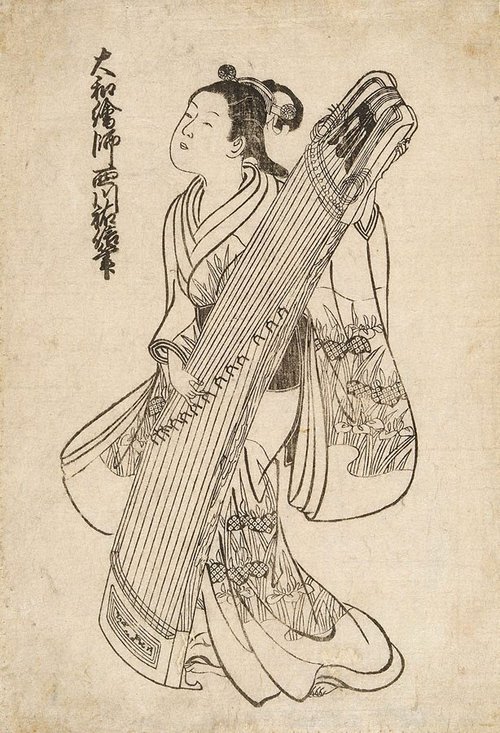Title
Onna manyô keiko sôshi, vol.3 (incomplete)
1728
Artists
-
Details
- Alternative title
- Illustrated book of women's writing lessons
- Place where the work was made
-
Japan
- Period
- Kyôho era 1716-1735 → Edo (Tokugawa) period 1615 - 1868 → Japan
- Date
- 1728
- Media categories
- Book , Print
- Materials used
- woodblock printed books
- Dimensions
- 26.0 x 18.3 x 0.8 cm
- Credit
- Gift of James Richardson 2002
- Location
- Not on display
- Accession number
- 317.2002.2
- Artist information
-
Nishikawa Sukenobu
Works in the collection
- Artist information
-
Rinshi Ranjo
Works in the collection
- Artist information
-
Ogawa Hikokuro
Works in the collection
- Share
-
-
About
Nishikawa Sukenobu is considered the greatest early 'kamigata' (Kyoto-Osaka area as against Edo) 'ukiyo-e' artist, whose influence reached Edo, the main stage of the 'ukiyo-e' school. He had studied both the Kano and Tosa schools before developing his own 'ukiyo-e' in which, unlike the two ruling-class forms, he focuses on the ordinary people and their lives with 'equal enthusiasm for that of an empress' (Chibbett, 1977, 139).
'Onna manyo keiko soshi' is a text book for letters at specific occasions for women in samurai households, written by a scribe working for twenty years. The text examples are laid out for use throughout the year, beginning from New Year's greetings to the end-of-the-year addresses. They also include those for special occasions such as sympathy letters for illness, death, fire and so on. Three examples are given for each occasion: a letter to a higher-ranking person, to an equal, and to a lower, indicated by symbols of cherry blossoms, maple leaf and bamboo leaves respectively.
Both volumes together include five illustrations by the artist: one double-page and two single-page illustrations in vol.1; two single-page in vol.3. They are lively depictions of women in everyday activities that correspond to some of the occasions included in the text.
Asian Art Department, AGNSW, 2002.
-
Places
Where the work was made
Japan
